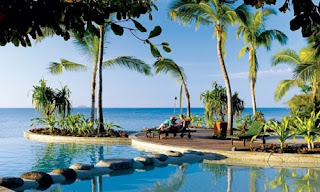Sustainable Tourism and the Triple Bottom Line
So what is sustainable tourism? The UN World Tourism Organization (UNWTO) (www.unwto.org) has defined sustainable tourism as an enterprise that achieves a balance between the environmental, economic, and socio-cultural aspects of tourism development so as to guarantee long-term benefits to recipient communities. According to UNWTO, it should: -
- Make optimal use of environmental resources, maintaining essential ecosystems and helping conserve biodiversity
- Respect socio-cultural authenticity, conserve built and living cultural heritage, and contribute to cross-cultural understanding and tolerance
- Ensure long-term socio-economic benefits, fairly distributed to all community stakeholders, including stable employment and income-earning opportunities, social services, and poverty alleviation
Sustainable Tourism and the Triple Bottom Line
This is commonly called the triple bottom line for sustainable development: environmental, economic, and cultural returns on investment. Some identify a fourth benefit of well-managed tourism: public education for both visitors and residents to deepen understanding of cultures and ecosystems, though this is also a cultural benefit. A lot depends on the situation in which a destination finds itself.
How wealthy or poor is the region? How well do locals understand and support the characteristics that make their place attractive to tourists? How vulnerable are those assets? Which type of potential tourist is most appropriate? How many tourists come, what do they do, and who gets their money? When an attraction such as a popular national park or renowned cultural monument is involved, impacts depend a lot on tourist interaction with neighbouring towns, called gateway communities. So good management means thinking about the destination as a whole — not just the protected site, but also its human, natural, and cultural settings.
Tools to Help Manage Destinations More Sustainably
System of Measuring Excellence for Destinations (SMED). Typically, a destination hires the Montreal-based Centre of Excellence for Destinations (www.ced.travel), a UNWTO affiliate, to perform two months of research on the entire tourism and stewardship situation in the locality, including a series of workshops, interviews, and meetings.
The SMED process is fairly new, but some places have already used it. Mexico City has begun using SMED recommendations. In the congested old downtown area, for instance, “a new bicycle rental system has given great results both for tourists and locals,” reports SMED expert Dr. César Castaneda. “People working in the centre histórico are encouraged to go out for lunch and meetings on the bikes instead of driving.” Portugal’s Douro Valley, famed for its terraced hillsides of port wine vineyards, used its SMED report to obtain 30 million euros from the European Union to implement the recommendations, including the creation of a DMO, official adoption of National Geographic’s Geotourism Charter principles, and development of a network of tourism information booths.
Scientific research. Ecosystems are under pressure almost everywhere. Protecting them requires understanding how they work. At Australia’s Great Barrier Reef, for instance, marine ecology findings led to the politically difficult but scientifically defendable decision to increase “no take” fishing zones from 14% to 33%. Elsewhere, National Geographic and others have been funding similar research that has led to such actions as bans on fishing the Nassau grouper spawning aggregations on the Belize Barrier Reef.
Monitoring. In China, Yangshuo’s karst landscape and constituent towns are a major Chinese tourist attraction. To understand sustainability issues, UNWTO has worked with Sun Yatsen University to monitor some 40 sustainability indicators developed by UNWTO. This “Tourism Observatory” conducts annual surveys of four key groups: businesses, residents, foreign tourists, and domestic tourists, and then assesses indicator data. Thus, the exercise includes input from people often left out of tourism management: visitors and residents. The reports help local leaders identify and resolve problems.

Comments
Post a Comment